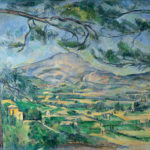Mature Period
Mature Period
Provence, 1878–1890

In the early 1880s the Cézanne family stabilized their residence in Provence where they remained, except for brief sojourns abroad, from then on. The move reflects a new independence from the Paris-centered impressionists and a marked preference for the south, Cézanne’s native soil. Hortense’s brother had a house within view of Montagne Sainte-Victoire at Estaque.
A run of paintings of this mountain from 1880 to 1883 and others of Gardanne from 1885 to 1888 are sometimes known as “the Constructive Period”.
The year 1886 was a turning point for the family. Cézanne married Hortense. In that year also, Cézanne’s father died, leaving him the estate purchased in 1859; he was 47. By 1888 the family was in the former manor, Jas de Bouffan, a substantial house and grounds with outbuildings, which afforded a new-found comfort. This house, with much-reduced grounds, is now owned by the city and is open to the public on a restricted basis.
Also in that year Cézanne broke off his friendship with Émile Zola, after the latter used him, in large part, as the basis for the unsuccessful and ultimately tragic fictitious artist Claude Lantier, in the novel L’Œuvre. Cézanne considered this a breach of decorum and a friendship begun in childhood was irreparably damaged.
